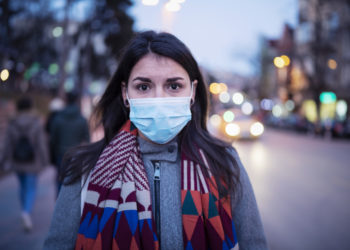We are several months into the global COVID-19 pandemic with no sense for how much longer closures and stay-at-home orders will be in place. With talk in the Unites States about when we will get back to in-person work and school, guidelines indicate that when we go back, it won’t be the same. Social distancing, mask wearing, and a ban on in-person meetings will be required.
Social distancing in an office setting and especially a lab setting will likely mean that not everyone will be at work at the same time, on the same days.

A continuing wrinkle in the get-back-to-the-office plan is that schools are currently closed and summer activities for kids are already being canceled. Just last week, Girl Scouts announced that their ban on in-person events is extended through August 14, 2020. This is a huge blow given the thousands of girls that attend Girl Scout camps over the summer. Other organizations are likely to follow suit. Working parents whose offices open for business will continue to struggle with their kids having no where to go this summer.
School systems are forced to start planning for the fall. Will kids be back in school? Will it be staggered in-school schedules mixed with online learning to decrease the number of kids in the building at a time? Is social distancing possible for very young students? It seems entirely possible that those with kids in pre-K–12 have a long way to go before we can work in the office from 9–5, Monday–Friday.
Colleges and universities are likewise struggling with decisions regarding the fall. Online programs have gotten mixed results so far and students are understandably questioning high tuition rates for what they see as an inadequate education.
All of these factors will likely take a significant toll on what is being produced and by whom in scholarship. I would like to break down a few topics we should continue to explore as the pandemic disrupts how we work.
Women Will Be Set Back
There had already been concerns raised on Academic Twitter about male researchers boasting about how massively productive they planned to be under quarantine and female researchers (in this case mothers) feeling like they were drowning in quicksand. Of course, there are male researchers that are also parents and they may be struggling to juggle things as well. That said, what this pandemic seems to be highlighting, again, is that the bulk of household and childcare work falls to one person (typically the mother).
In a disturbing data point, some journals are reporting a decline of papers submitted by female first authors. Of course, not all female researchers are parents and as such, other caregiving activities may be interfering.
I suspect that manuscript submissions won’t be the only activity delayed. Women juggling childcare and a research career may not get back to the labs as quickly or may have had to delay dissertations or pause studies all together. Might the end result be fewer women conducting research? Fewer women able to accept editor roles? Fewer women chairing technical committees?
OASPA announced this week that several open access publishers are combining efforts in identifying individuals that are qualified to review COVID-19 papers, promise to do so quickly, and promise to stay on top of preprints to identify those of high quality (I suppose in order for the journal to solicit those papers). My guess is that if you are a parent with the majority of household and caretaking responsibilities (which now includes teaching your child at home), you won’t have time to put your name on this list.
While evidence of the drop in manuscript submissions from women is currently anecdotal, this is an area in which journals that are capturing gender information on submissions should study and report out. Clearly submission of papers is not the only measurement of productivity. Journals can also collect and share data on reviewer activity, which has taken a hit, and editor responsiveness.
Rapid Review of COVID-19 Papers
Jasmine Wallace explained how her editorial office adapted to ensuring the rapid review of COVID-19 related papers. As the research has expanded in the last several weeks, more and more is becoming known about how COVID is affecting Americans, in particular. Just in the last 14 days we have learned about kidney trouble, thickening of blood, stroke, and lingering recovery concerns due to COVID-19. In other words, it’s not just general medicine or journals that focus on virology or pulmonary issues that will be slammed with submissions related to COVID. In fact, publishers in cardiology, neurology, and oncology have all reported to me large increases in submissions of COVID related papers. HHS journals are also reporting a spike in submissions related to the economic issues, work from home, education in an online environment, etc.
Not all of this research is good. Not all of it will be published in top or even middle tier journals. However, many journals have deployed new processes to expedite the review of COVID-19 papers. This situation will present some interesting case studies in how long a journal can sustain an “emergency” process and weather the financial implications.
We have already seen questions emerge from researchers on why journals can peer review COVID-19 papers quickly and efficiently, but not other deadly diseases? The short answer is that it’s not sustainable without significant investments in staffing and editorial oversight. Societies and their journals are also producing videos, podcasts, fact sheets, patient centers, editorials, and summaries around the COVID-19 content. Organizations that produce guidelines are making updates as new information comes to light. All of these activities are labor intensive, not to mention expensive.
Again with the OASPA initiative, seeking a corps of volunteers qualified to review and willing to drop everything and review quickly and constantly is quite a haul. It’s possible that there are researchers with the time to do this now, but for how long will that be sustainable? Will the urgency in getting COVID-19 papers reviewed and published quickly start to wane at some point? In other words, will COVID papers slowly move into the “normal” paper process, or all will all papers get the COVID-19 treatment?
Non-COVID Biomedical Papers
I don’t have any anecdotes to share on this one, but what the heck is happening with non-COVID biomedical papers? At some point, it would be interesting to see the pattern of review and eventual acceptance of papers in this area. Are journals getting increases in page budgets in order to publish COVID-19 papers while maintaining their regular number of papers?
If page budgets remain the same and quality submissions increase rapidly, acceptance rates must go down. Of course, if the bulk of submissions are subpar, the efforts to review rapidly will just burn resources. I don’t have a sense of the net surplus as surely researchers that might have been submitting papers on non-COVID topics may now instead be working on COVID issues. That said, the stories of large submission increases seem to indicate that journals are still getting their typical number of submissions in non-COVID topics as well as new COVID papers.
As stated earlier, are non-COVID papers seeing a slow down in review or processing while journals and editorial board prioritize COVID papers? And lastly, are researchers holding non-COVID papers sensing that Editorial Boards are prioritizing other work right now?
Will We See a Significant Dip in Submissions?
I think it’s pretty safe to assume that the closure of labs and the delay of field work will result in few manuscripts produced. How big this impact will be largely depends on how long work is delayed. Still, journals need to be prepared for fewer papers and all that means: volume based subscription pricing, vendor costs, staffing issues, and in the case of journals that depend on per manuscript fees, significant loss of income.
We should also prepare for funding priorities to change as well as funding from industry that may shrink for the next several years. With the exception of the big publishers, most of us are not exactly diversified when it comes to subject areas we cover.
Too Many Questions
There are many questions we really have no way of answering right now. How long will we be simultaneously working/parenting/caregiving from the comfort (or discomfort as it may be) of our living rooms? Will we be dealing with a recession or a depression when this is “over”?
What will the financial state of universities look like by the end of this year and into next year? How will these issues affect subscriptions to scholarly content? Will there be a loss in momentum toward transformative agreements in exchange for subscription pricing negotiations?
Will societies that depend on subscription revenue and conference attendance be able to survive losses from both revenue centers?
In most things these days, people are preparing for the fact that a return to “normal,” will not be “normal.” There may be remarkable changes and we would be foolish to think “normal” aspects of scholarship will return. In some cases, this may be for the better. In other cases, it surely will not. I suppose our task right now is to figure out how to guide us towards the good changes.
PS: I am deeply concerned that hard-fought gains made by women in scholarship will be eroded in a very short time thanks to this pandemic. Decades of work to promote the sciences to girls and to move the dial on the education system to open opportunities up to women could be set back significantly. It doesn’t need to be that way if we all decide otherwise. Please think about what steps and actions you could take to make sure we don’t take several enormous leaps backwards.
Discussion
7 Thoughts on "What Will We Learn About Scholarly Publishing as a Result of COVID-19?"
“I don’t have any anecdotes to share on this one, but what the heck is happening with non-COVID biomedical papers?” My own (anecdotal) experience is that the answer to your question is “nothing.” The volume of papers I’m editing is the same as prior to the pandemic, and the number of COVID papers is a very small percentage *shrugs*
I am a working professional and very right struggling to juggle things but end of the day make sure that my work and family both are well justified. It is imperative that all the family members mutually take over the household responsibilities to ensure that no one has taken a backseat especially women
Thanks for your post, Angela. I’ve heard some similar concerns about reductions in research and publication by women. Maybe difficult to assess given the surge in manuscript submissions we are seeing and hopefully confounded by attempts to raise awareness about diversity and encourage submissions from those not in the majority, which like most things, varies by discipline. Here’s a related post:
https://www.insidehighered.com/news/2020/04/21/early-journal-submission-data-suggest-covid-19-tanking-womens-research-productivity
Do you have a reference about Girl Scouts cancmeing camps?
Here is the announcement on the website of the Nation’s Capitol Region: https://www.gscnc.org/en/council/about-us/covid-19-information.html. In looking further, it seems each council may be doing something different.
Not being an editor, I can’t address the question of how many papers are being submitted to a specific journal, but I frequently receive manuscripts for (usually double-blind) peer review from editors and there’s no sign of this diminishing over the last month or two. I work in an area of social science (medieval history) that doesn’t always require on-site research, which implies that many scholars are working from home, but I suspect that’s always been the case among historians versus researchers in STM, and women are well-represented in history and humanities.
As an author without external research funding I am dividing journals into two groups, those that waive APC during the COVID19 epidemic (or never impose them anyway), and those that do not.



